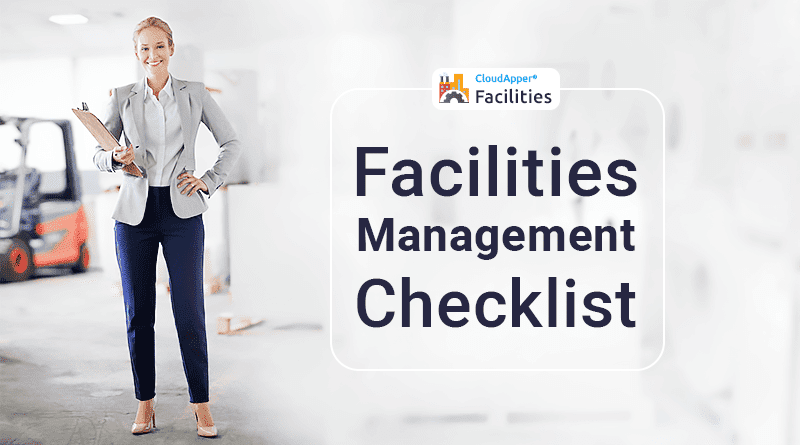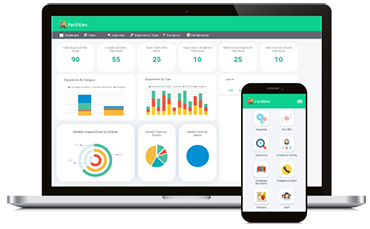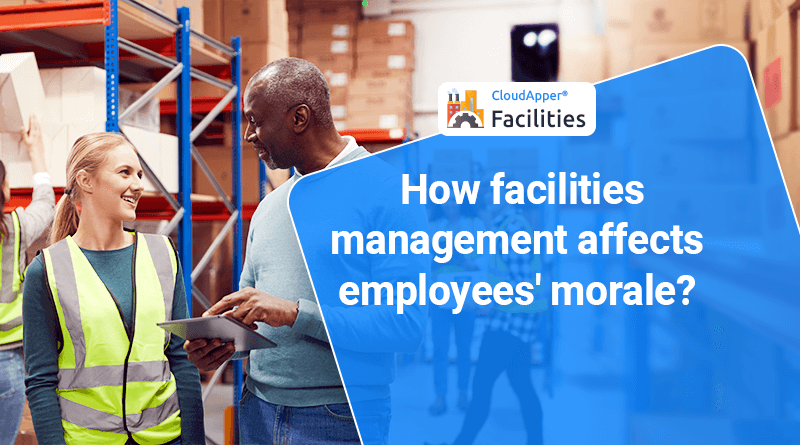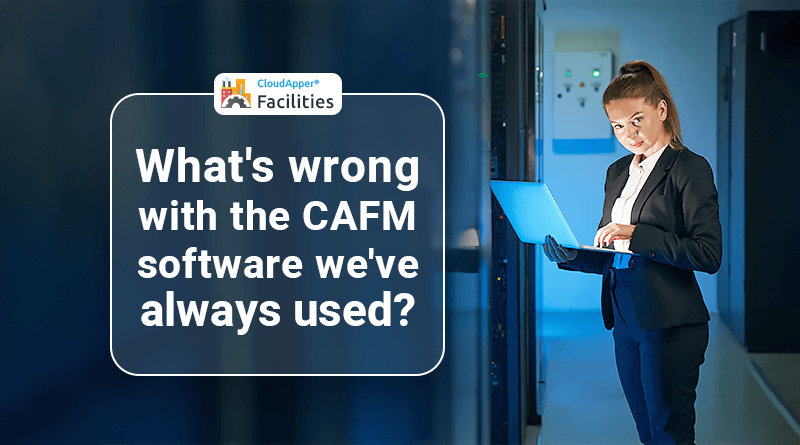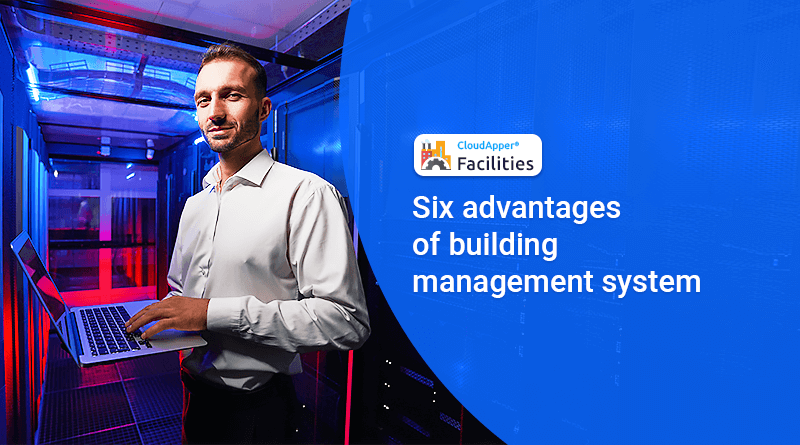Table of Contents
As the number of facility and maintenance leaders grows, it becomes harder to remember what needs to be done and when. A facility maintenance checklist helps teams stay on top of the many tasks they have to do by laying out how often each part of your facilities management needs to be checked. When leaders use checklists, they find that their assets and equipment last longer and that their teams get fewer requests for emergency maintenance.
Facility managers worldwide regularly check the items on the following building maintenance checklist. Add the ones that apply to the way you do things to your list. A checklist can also be used to figure out how a facility is doing.
Checklist for outdoor facility management
1. Roof
Check your buildings’ roofs every six months to ensure they haven’t been damaged by bad weather or other things. During your inspection, make sure that your team does the following:
- Get rid of any trash on the roof or in the gutters.
- Look for holes, cracks, and blisters in your flat roof.
- Check your sloped roof for bent edges, shingles that are buckling, rusting metal, curling, and missing granules on the shingles.
- Check to ensure that all drains and vents are clear and not clogged.
- Check the vents and chimney.
- Look for cracks, water stains, and water leaks in the ceilings of your buildings.
- Check to see if any shingles or tabs have fallen off.
- Look for rust on the metal.
- Check the outside surfaces of the walls for damage.
- Look for cracks, water stains, and leaks on the inside walls.
2. Parking garages and lots
20% of all car accidents happen in parking lots, and you wouldn’t believe it, but managing your lots and garages well can help stop these accidents. When you look at your parking lots, keep in mind the following:
- Make sure that all of the parking lot lines, crosswalks for pedestrians, traffic directions, and curb warnings can be seen and are in good shape.
- Make sure that all fences, guard rails, and railings are stable and built well.
- Make sure there are plans in place in case of an accident or damage to a vehicle. • Cameras are watched from off-site.
- Test emergency panic alarms to make sure they are working right.
3. Windows and doors
Even though you don’t have to replace your windows and doors often, you should look at them and make sure they work every year. Cleaning windows should also be a part of your plan. Make sure you:
- Remove dirt and dust from the window sills and door tracks.
- Check the inside and outside for peeling or water stains, which could be signs of a leak that needs to be fixed or replaced.
- Make sure the gate closing safety shut-off works in an emergency.
- Make sure that all the locks and knobs work well.
- Use a non-oily lubricant on any windows or doors that don’t move smoothly or are stuck.
- Fix or replace broken windows that won’t open or close properly.
4. Seasonal preparations for building
If you reside in a temperature-variable environment, you should do a seasonal inspection twice a year. As the temperature drops, you should do the following:
- Look for signs of freezing on exposed and outside pipes.
- Fill cracks and holes around exposed pipes and seal them.
- Maintain indoor temperatures above 55°F and advise tenants to do the same.
- Look for signs of too much water and dry out the area, as well as any mould or mildew that might have grown.
- Examine your heating systems for cracks and inefficiency.
- HVAC thermostats should be calibrated and tested to ensure proper operation.
- Keep an eye on snow piles and make a plan for getting rid of them if they pose a danger.
- De-ice pathways and sidewalks to reduce slips and falls.
- Clean and replace wet floor mats in entryways and indoor walkways to keep floors from getting slippery.
- Keep an eye on your heating bills and, if needed, add insulation to your attic.
- Clean the roof of snow.
When the weather becomes warmer in the spring, you should:
- Clean the windows
- The floors should be cleaned thoroughly.
- Keep the bathrooms clean.
- Maintain your outside vegetation (remove debris, plant grass seed where needed, trim shrubs and bushes, etc.)
- Check the roof for damage from strong winds, heavy snow, ice dams, or just the age of the building.
- Check the property for standing water, leaking gutters and roofs, foundation cracks, wet spots on the ceiling, and damaged landscaping that needs to be regraded.
- Look for cracks around doors and windows, chipped paint, damaged siding or masonry, and gutters that aren’t attached to the house.
- Spray the outside of your home to keep ants, roaches, and other bugs away.
- Check the thermostat, electrical cables and connectors, air flow, run capacitor, and overall efficiency of your HVAC unit.
- Check the air ducts, condensation drain pan, blower motor and wheel, compressor, and refrigerant pressure in your HVAC unit.
Checklist for managing the inside of a building
5. The power grid
If your facilities are not properly linked, electrical surges could happen. Even if they only happen once or twice, surges can damage the electrical parts in your building if they happen often.
When doing an electrical inspection and regular maintenance, it is important to ensure that the wiring is in the right place and that all wires are still well-secured, supported, and protected. Also, make sure the connections are tight, and there is no corrosion. A specialist may be needed to help with this part of the exam.
6. Plumbing
It can be disturbing to deal with plumbing problems, which can be challenging to spot. Putting the items below on your facilities management checklist will help you avoid problems and water damage in the future.
- Look for signs of active leaks, like water stains, damp spots, or puddles, as well as mold or mildew.
- Look for signs of corrosion on all pipes that can be seen.
- Make sure that the water pressure is between 40 and 80 psi.
- Make sure the water heater is set to the right temperature and doesn’t leak.
- Check all drains to make sure there are no clogs.
- Install backflow prevention devices and test for backflow every year to keep water from flowing backwards or getting dirty in the system.
- Make sure the shut-off and safety valves work right.
7. HVAC systems
Because HVAC systems are expensive, inspecting and maintaining them regularly is important to always make sure they last as long as possible. The following should be looked at every six months as a good place to start:
- Check to see if your buildings are getting enough air from the units.
- Clean the drains, lines, coils, and air filters (or replace them).
- Check the amount of coolant and add more if needed.
- Make sure that all wires, capacitors, and thermostats work well.
8. Equipment
Each piece of equipment needs to be checked and maintained differently. Ensure every piece of equipment is on your list for managing your facilities. Check the manual to determine how often inspections should be done and what should be cleaned, replaced, or checked during an inspection.
9. Total amount of energy used
Utility costs can add up quickly when you are in charge of several sites. As a leader, you must ensure that energy use and costs are kept to a minimum. A good start is looking at your energy bills every month for things that need clarification. On the other hand, you might need more than inspections to save you money. Look into ways to reduce the amount of energy used during inspections. Some of these might be:
- Motion-sensing lights are being put in.
- LED light bulbs are being switched out.
Buying building automation systems to automate HVAC and lighting systems. Buying new equipment to replace old.
10. Elevators
A very common reason why people get hurt or have accidents in elevators is that they aren’t kept in good shape. Your team should check all your elevators regularly to make them safer and stop them from breaking down. Please make sure to include the following:
• Make sure the doors are easy to open and close and that nothing is in the way.
• Search for signals of damage on the ceiling, walls, and handrails.
• Replace any lights that have burned out, including those on the control panel.
• Make sure the emergency phone connects immediately to 911 or the fire department in your area.
- Fix any lights that are out on each floor.
- Check the door panels and the space between them.
- Look at the smoke alarm and the smoke detector.
- Check the oil level and make sure all parts have enough grease.
- Look for fraying or other problems in the electrical wires.
- Make sure there is enough room for technicians to stand up.
- Get rid of anything that makes it hard to get to the equipment.
- Make sure that the emergency exit is easy to get to.
- Make sure the brakes and system are in good shape by checking them.
- Look for signs of wear on the cables.
- Check the hoist path for damage or signs of rodents.
- Make sure the place is easy to get to.
- Check the pit to make sure it has enough room.
- Check and analyze the frame of the car for signs of damage.
Checklist for managing the safety of buildings
11. A safety system
A good security system could stop theft and break-ins, saving your business thousands of dollars. You should get a security system if you still need to get one. If you have one, make sure it is maintained and checked out regularly by doing the following:
Check the control panel, all the cameras, and the door and window locks. This isn’t part of the security system, but it may help keep your business safe.
12. Tools for fighting fires
Because fire safety is so important, your facilities management checklist should include correctly taking care of fire extinguishers.
Fire extinguishers and carbon monoxide detectors have to be checked once a year by OSHA to make sure they are still working well.
First, make sure your fire extinguisher is turned on. Fire extinguishers should always be turned on, except when they are being checked or fixed. Also, the weight and pressure of the extinguisher’s refillable canisters should be checked every six months. If the substance, weight, or pressure goes down, that means it doesn’t meet the requirements, and your maintenance staff should look into it.
13. ADA compliance
Many businesses must follow the rules of the Americans with Disabilities Act (ADA). It is important to check your buildings every six months to ensure they still follow these laws. You may have to pay fines if your buildings don’t meet the rules. Check out the most up-to-date ADA rules.
14. Conditions for safety
It is vital to stay up-to-date on all safety rules. Check in with your department every three months to ensure it follows all the new rules. If any of your buildings or procedures don’t follow the rules, make sure to create maintenance tickets to fix the problem.
Conclusion
When you want to improve your facilities management, keeping track of maintenance items in an Excel spreadsheet or on paper is a great place to start.
But software like CloudApper Facilities for managing facilities may help you even more! You’ll be able to delegate various jobs to your staff regularly, ensuring that you never miss another inspection.
What is CloudApper AI Platform?
CloudApper AI is an advanced platform that enables organizations to integrate AI into their existing enterprise systems effortlessly, without the need for technical expertise, costly development, or upgrading the underlying infrastructure. By transforming legacy systems into AI-capable solutions, CloudApper allows companies to harness the power of Generative AI quickly and efficiently. This approach has been successfully implemented with leading systems like UKG, Workday, Oracle, Paradox, Amazon AWS Bedrock and can be applied across various industries, helping businesses enhance productivity, automate processes, and gain deeper insights without the usual complexities. With CloudApper AI, you can start experiencing the transformative benefits of AI today. Learn More
